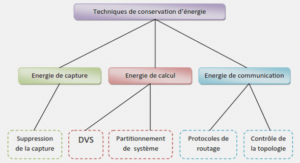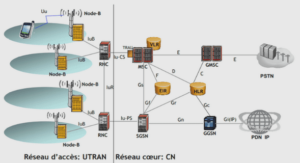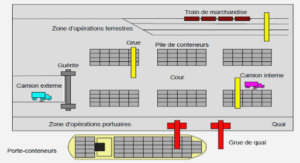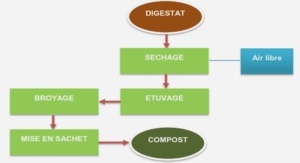Connecticut Warbler distribution
The Connecticut Warbler {Oporornis agilis) is a neotropical migrant that reproduces almost exclusively throughout a small band at the southern end of the boreal forest (Hobson and Bayne, 2000) across Canada, from British Columbia to Quebec and in Wisconsin, Minnesota and Michigan states (Pitocchelli et al.9 2012). Even with a large breeding range, populations are sparse and at low densities (Cooper et al., 1997). Population trends are hard to evaluate because of low sample sizes (Danz et ah, 2007) and its secretive behaviour (Pitocchelli et al., 2012).
During the first Quebec Breeding Bird Atlas (data collected between 1984-1989) the Connecticut Warbler was detected in only 21 of about 5000 parcels and its breeding status confirmed in only three(14% of confirmation when detected; Ibarzabal et al., 1995). Comparatively, a more common warbler, the Yellow-ramped Warbler {Dendroica coronata) was detected in 1539 parcels and confirmed in 507 (33 % of confirmation when detected; Letourneau and Lafontaine,1995).
Connecticut Warbler habitat
This small and secretive warbler forages on the ground, walking between shrubs and feeds mainly on insects captured on the forest floor or just above it (Pitocchelli et al, 2012).
Males are usually seen when they sing at the top of trees. Nests are found on or near the ground in thick undergrowth of shrubs, moss and thickets (Pitocchelli et al., 2012).
Habitat preferences vary across the breeding range. Breeding grounds occur in various places: from poorly drained areas, such as spruce-tamarack forests (Picea mariana (Miller) Britton, Sterns & Poggenburgh; Larix laricina (Du Roi) K. Koch) to wet second-growth forests, even in small grass margins along spruce forests or deciduous forests and jack pine barrens (Pinus banksiana Lambert) (Pitocchelli et aL, 2012). At the western limit of their breeding range,they nest in trembling aspen stands (Populus tremuloides Michaux) with a well-developed shrub layer mainly composed of Labrador tea {Rhododendron groenlandicum (Oeder) Kron & Judd), bog laurel {Kalmia polifolia Wangenheim), bog rosemary {Andromeda polifolia var. latifolia Aiton) and sheep laurel {Kalmia angustifolia Linnaeus) ( Johns, 1993; Cooper et al, 1997). In the United-States, Connecticut Warblers are seen in open forest with dense and relatively high (> 1 m) shrubs or herbaceous and herb layers (Binford, 1991; USDA, 2002). In Ontario, a study on general wildlife conservation management strongly associated Connecticut Warblers with deep organic soils and wet, nutrient poor vegetation types with black spruce/tamarack as the dominant tree component (Welsh and Venier, 1996).
Forest/blueberry management
Blueberry culture is one of the main industries in Saguenay-Lac-Saint-Jean, increasing from 19 398 ha in 2004 to 27 100 ha in 2010, it represents 85% of Quebec’s total area for blueberry culture (MAPAQ, 2011). To accommodate the needs of the forest industry and blueberry culture, an alternative to conventional blueberry culture was developed in Normandin. (Gouvernement du Québec, 2002). Since the late 90’s, a new concept of agroforestry, called « forest/blueberry management », is being tested by the Corporation d’aménagement forestier de Normandin (CAFN), in Lac-Saint-Jean region. The goal is to produce blueberries while supporting the initial forest productivity by intensive sylviculture within the remaining forest matrix (Gouvernement du Québec, 2002).Forest/blueberry management consists of alternating bands of blueberry fields with bands of forest. Blueberry bands (45 to 60 m) are under normal agricultural management (grindings, mowing and fertilizers, pesticide and herbicide spraying) (Gouvernement du Québec, 2002; CAFN3 2010). Forest bands are divided into three equal sub-bands, about 14-20 m wide. Eventually, a new sub-band is cut entirely each 17-year approximately, leading to an uneven aged band. An intense sylviculture is held in forest bands to compensate for the lost of forested area due to the introduction of blueberry field bands. Connecticut Warblers occur and breed in this area (Lavoie 2009; Saulnier 2011).
Home range and spatial requirements
Landscape fragmentation has become a major issue in conservation biology (Ewers and Didham,.2006). Permanent conversion of forest into agricultural land has large impacts on wildlife (Bayne and Hobson, 1997; Schmiegelow and Monkkonen, 2002). Landscape fragmentation includes patch size, edge and isolation effects (Andrén, 1992; Fahrig, 2003), all leading to a change in suitable habitats for wildlife. Loss of suitable habitats on the breeding and wintering grounds is one of the main causes of decline in neotropical migrant populations (Bôhning-Gaese et al, 1993). Habitat loss caused by conversion of forested land to agriculture has serious consequences on nesting birds (Bayne and Hobson, 1997), especially ground nesting species (Kurki et al, 2000; Schmiegelow and Monkkonen, 2002). Logging activities and permanent conversion of aspen stands into agricultural lands recently led the British-Columbia government to add the Connecticut Warbler on the British-Columbia Red list as a threatened species (Cooper and Beauchesne, 2004), at a level 2 of conservation framework priority (B.C.Conservation Data Centre, 2013). The Connecticut Warbler population from the Chippewa National Forest (Ontario) has been declining since 1991, a rate of-13% between 1991 and 2007 (Danz et al.9 2008). The United-States considers the Connecticut Warbler as a species of concern because of its specifics habitat requirements and because of the threats on its nesting habitat (Matteson et al., 2009). Habitat loss can induce changes in behaviour that negatively affectforaging (Mahan and Yahner, 1999; Fahrig, 2003), breeding (Kurki et al, 2000; Fahrig, 2003), dispersal success (With and King, 1999; Bélisle et al, 2001; Fahrig, 2003) and prédation (Bayne and Hobson, 1997; Fahrig, 2003).
Bird monitoring
All birds were located in jack pine stands; although one couple home range was adjacent to a relatively small woody peatland. In total, 5 females and 17 males were followed by telemetry (9 in 2008 and 13 in 2009). We were unable to get enough locations for 2 non-reproductive males. They were left out of home range size analysis. Number of days of observations varied depending on the date of capture, the date of nest discovery or the loss of signal, and averaged of 6 days of observation per individual. An average of 61.2 ±22.3 locations was obtained by telemetry for each bird. The longest consecutive observation period lasted for about 2 hours and the shortest lasted 5 minutes (one location).
Out of 22 individuals, 5 females and 5 males were considered successful reproductive individuals and they were all located in the CAFN area. Those 10 breeders had their home range’s ground vegetation mapped. Birds have been observed to cluster in loose aggregates of a few individuals.
Seven nests were found during this two-year study. All nests were located within a low dense forested area, but three were within a clearing with almost no tree canopy in its immediate surroundings. Five nests were located near the edge of the forest (from 0.3 to 25 m to the edge).
As for the other two, one was about ai m from a road and about 30 cm from an All-TerrainVehicles (ATV) trail for the other. Only two nests out of seven were found within a forested band under forest/blueberry management, the others were in the residual forest matrix.
|
Table des matières
CHAPITRE 1 :INTRODUCTION GÉNÉRALE
CHAPITRE 2 :UTILIZATION OF HABITAT CHARACTERISTICS BY THE CONNECTICUT WARBLER WITHIN HOME RANGE IN JACK PINE STANDS OF LAC-SAINT-JEAN REGION, QUEBEC
1. INTRODUCTION
1.1 Connecticut Warbler distribution
1.2 Connecticut Warbler habitat
1.3 Forest/blueberry management
1.4 Home range and spatial requirements
1.5 Objectives
2. METHODS
2.1 Study area
2.2 Capture and radiotracking
2.3 Home range size and vegetation mapping
2.4 Resources selection by Connecticut Warbler
3. RESULTS
3.1 Bird monitoring
3.2 Home range size
3.3 Habitat selection: ground vegetation
3.4 Habitat selection: landscape characteristics
4. DISCUSSION AND RECOMMANDATIONS
4.1 Home range size
4.2 Site characteristics
5. MANAGEMENT IMPLICATIONS VERSUS CONNECTICUT WARBLER SUSTAINABILITY
6. CONCLUSION
CHAPITRE 3 : CONCLUSION GÉNÉRALE
![]() Télécharger le rapport complet
Télécharger le rapport complet






